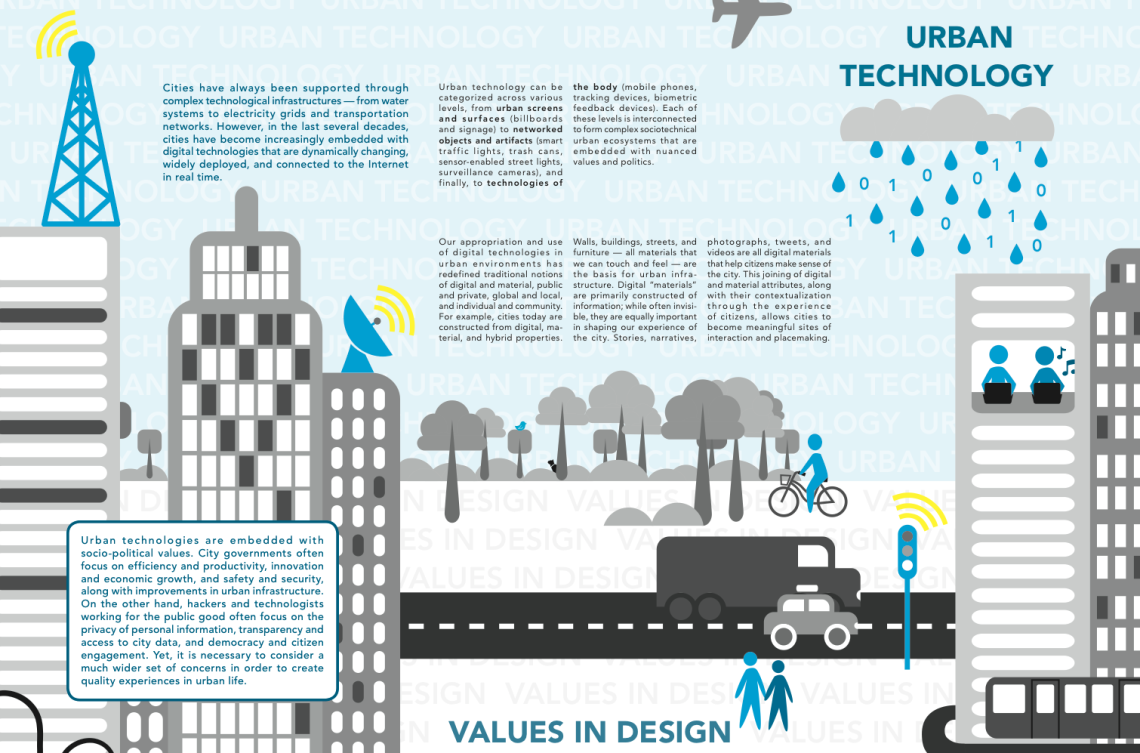
Synopsis
Designing Policy was a year-long research project conducted by Laura Forlano and Anijo Mathew, assistant professors at IIT Institute of Design, and funded by the Urban Communication Foundation. Forlano and Mathew held a series of workshops focused on urban technology in Chicago, New York, and Boston to re-imagine the ways in which digital technologies can be embedded in public spaces. The workshops engaged a range of stakeholders, from policymakers and entrepreneurs to activists and academics, in hands-on activities using open and participatory co-design methods demonstrating the role of digital technology in emergent forms of citizen engagement. The Designing Policy Toolkit illustrates the ways in which urban technologies are embedded with values, as well as how co-design methods enable diverse stakeholders to come together around the complex socio-technical questions that are shaping everyday life in cities.
Problem
How might citizens participate in collaborative processes around complex socio-technical issues in cities? In recent years, cities have embraced the idea that they are platforms for the exchange of big data, laboratories for urban experiments, and spaces of civic hacking. These activities raise questions about the nature of civic engagement as well as the embedded values that inhabit civic media infrastructures in cities. While many of these activities have been focused on designing solutions to urban problems, others aim to raise new questions by mobilizing the lived experiences of citizens around specific matters of concern and alternative possible futures.
Proposed User Experience
The Designing Policy project integrated approaches from codesign and critical design in order to probe discussion of values and ethics regarding urban technologies, which can be understood as a particular kind of civic media. These workshops, which can be understood as a kind of prototype or experiment, were the first step in developing a more focused approach to more participatory, collaborative and engaged modes of inquiry about alternative future possibilities for civic media in cities. There are two specific implications of the project at this stage. First, the Designing Policy project illustrated the ways in which physical and visual artifacts can be useful for communicating complex ideas about the nature of socio-technical systems. Second, the project highlighted the need to rethink traditional IRB processes in light of participatory design methodologies.